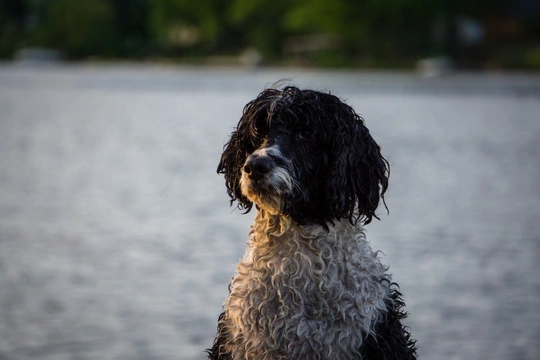
Five Dog Breeds with Webbed Feet
When we think of animals with webbed feet, we tend to think of ducks, otters and various other amphibious animals that can be found living in and around water sources. But some breeds of dogs actually have webbed feet too, and for a few breeds, this is a standard breed trait that is perfectly normal and included within the breed standard.
Dog breeds with webbed feet have evolved in that way due to their natural affinities for water, and in many cases, these breeds have a long-recorded history of water retrieving or working in and around water, for which webbed paws is a distinct advantage. Selective breeding to enhance this trait has played a part in the development of certain breeds too, so that today, there are several dog breeds that have webbed feet, which not everyone knows!
In this article we will share an introduction to five cool dog breeds that usually have webbed feet, and share some insights into how webbed feet helps water-loving dog breeds to swim and get around. Read on to learn more.
Why do some dogs have webbed feet?
Webbed paws are paws that have a thin, stretchy additional section of skin between the toes, so that the toes are joined together rather than being separated into individual digits. This webbing makes the surface area of the paw large and flat so that when paddling in water, the dog is able to gain more buoyancy and propulsion, making them able to swim faster and stronger than they would otherwise manage.
This webbing also helps the dog to walk with more stability on muddy ground, such as when getting into and out of the water and in marshy or wet areas of land.
Dog breeds that commonly have webbing between their toes are all breeds that have a long-recorded history of working around water, being keen swimmers, and having a natural affinity for being in the water too! Next, we will look at five dog breeds that all share the trait of having webbed paws.
The Newfoundland
The Newfoundland dog is a giant breed that is large and heavily built, and slow moving. Their large size and imposing appearance belies their very kind, calm and gentle natures, which makes them an excellent choice of dog for people looking for a large, gentle breed that tends to be relaxed and easy going.
Newfoundland dogs have webbed feet, and dogs of the breed tend to be keen and confident swimmers, being perfectly at home in the water and very good at swimming too!
The Portuguese water dog
As the name indicates, the Portuguese water dog has a long-recorded history of spending a lot of time in and around the water, and they were originally used by Portuguese fishermen, who worked the dogs and made the most of their affinity for swimming by using them to retrieve fishing nets from the sea.
There are even records of dogs of the breed saving people from the water that feel overboard, so it is fair to say that when it comes to canine swimmers, the Portuguese water dog is the leader of the pack!
The Weimaraner
The Weimaraner dog breed is a handsome and distinctive looking grey-coated pointer, with origins in Germany and now, popularity across most parts of the world. Within mainland Europe they are popular choices for carrying out a range of varied and diverse working roles, including as police dogs, search and rescue dogs, and as assistance dogs to help people to lead independent lives.
The Weimaraner’s webbed feet ensure that these dogs are also excellent swimmers, further adding to their versatility and popularity.
The Otterhound
The Otterhound is a native British dog breed, but a very rare sight today. Originally used as a working breed to hunt otters when otters were considered to be an invasive pest, the breed’s popularity and so, numbers declined sharply when wild native otter populations in the UK declined, meaning that today, both the otter and the otterhound itself are very rare. The Otterhound is included on the Kennel Club’s list of vulnerable native dog breeds, or breeds whose numbers have dwindled so low that the future viability of the whole breed is at risk.
Otterhounds today still display the webbed feet that proved invaluable as part of their water-based lives hunting otters, providing superior speed and mobility in the water, and dogs of the breed are still renowned for being keen swimmers today.
The Chesapeake Bay Retriever
The Chesapeake Bay Retriever hails from the USA, and they are a type of gun dog that is equally at home retrieving both over land and over water. The breed’s webbed feet ensures that they can retain their stability and get around even in marshy, estuary areas such as their native Chesapeake Bay, providing a seamless transition into the water when required.
The breed also shares common ancestry with a range of other well-known retrieving dog breeds, including the Irish water spaniel and the curly coated retriever, although they are less common in the UK than they are in the USA.



